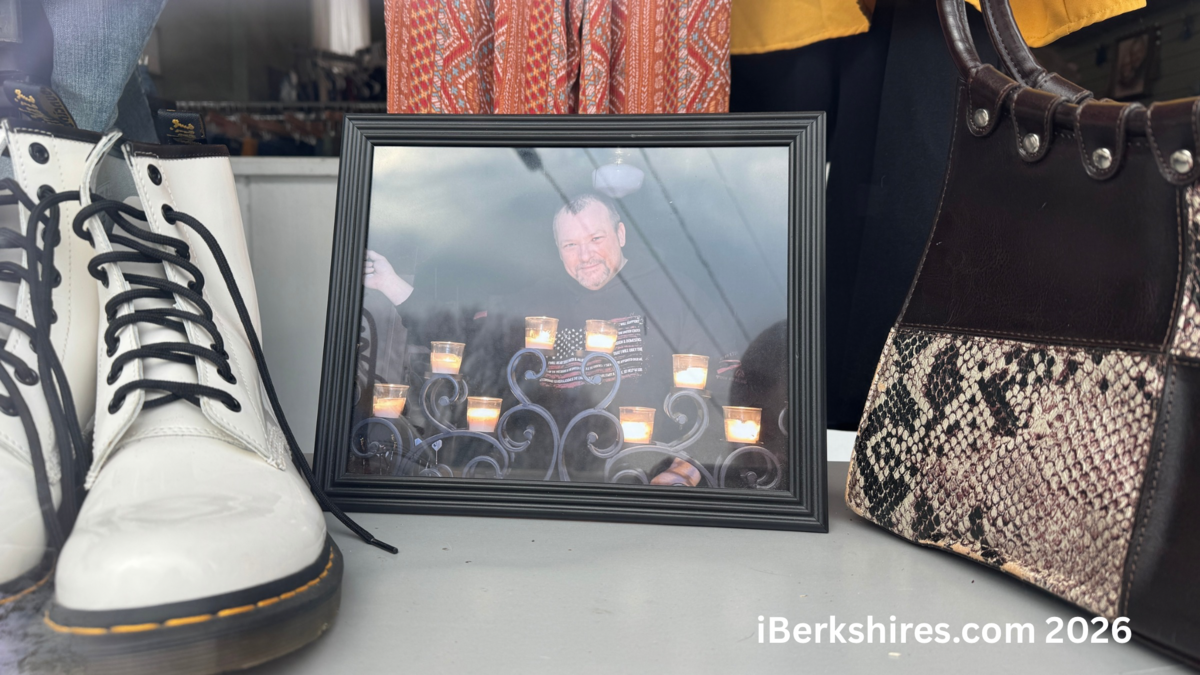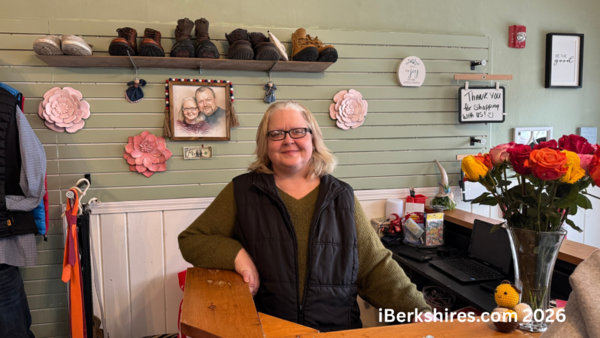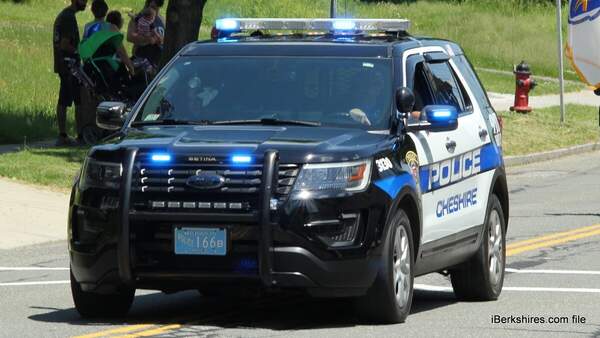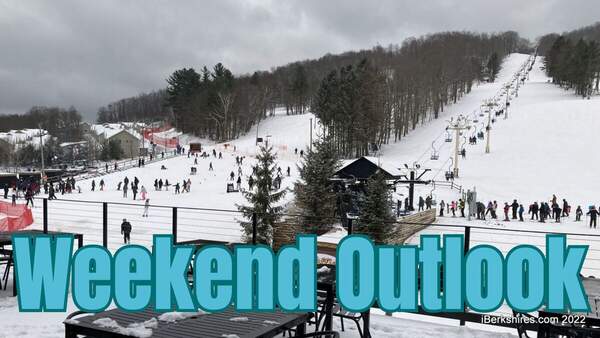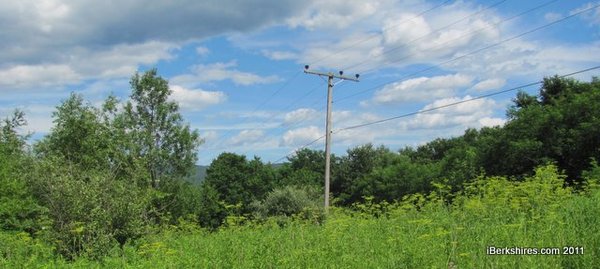
Invasive Species Being Plucked From Greylock Glen
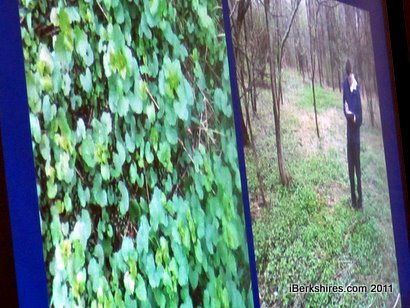 Garlic mustard, a biennial, can carpet landscapes, as seen in the slide at right. A combination of weeding and herbicide applications are being used against it. |
The hand weeding, as described by Chris Politan of Politan Ecological Services Inc., is part a concentrated attack on invasive species that have overrun parts of the glen, crowding out native plants. A combination of weeding, herbicides, "singeing," and cutting will be used over the next couple years to remove the plants so the natives can flourish.
Full eradication may not be impossible, Steve Johnson, an ecological consultant with Biodrawversity, told the Greylock Glen Advisory Committee on Thursday. "But we can manage them to the point they're not a dominant plant in the control area."
Biodrawversity, based in Amherst, was contracted to do a rare and protected species survey in 2008. A year later, the company began mapping out the invasive species, selecting four control areas to determine the efficacy of the treatments. It found about two dozen genera of watchlisted plants and about half that in invasive species.
"We came up with these four areas to focus on because they're either particularly rare species and or we envision increased human activity in these areas that may produce problems down the road," said Johnson, referring to plans for a campground, lodge and education center. Among the sections with larger concentrations of invasive plants are those that were cleared for previous glen development plans, such as the golf course and the ski area.
Hand weeding and followup applications of herbicide are being done by Politan Ecological Services over the next two years.
"We did a lot of hand pulling and herbicide application," said Politan, who used the mustard garlic that has spread through some 42 acres as an example to show the board what was being done. "We went to a lot of effort to hand pull near trailheads, along trails and along roadways because [we] did not want to scare everybody because we just came in and started applying herbicides without having this dialogue."
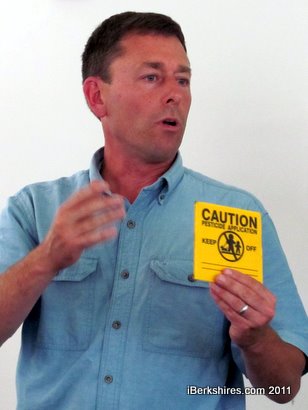 Chris Politan said signs will be put in place during herbicide application; the board asked that larger ones be posted at the parking areas as well. |
Board members guestioned the safety of the herbicides being used and how they would affect wetlands and people.
"The herbicides that we use, that we selected to use, are the least toxic. They are Category 4 so they're very low toxicity ... they're fairly benign and break down fast," Politan said, adding he would appear before the Conservation Commission with a letter of intent when work begins near a wetlands buffer zone. "Herbicides should be approached with caution but they're relatively safe when approached in the proper manner."
The herbicides are glyphosate-based (Rodeo and Accord Concentrate) and triclopyr-based (Garlon 4 Ultra).
Application is done very carefully, he said, using hand pumps and hand sprays, shields, drip bottles, gloves and sponges. Johnson was pleased with the work, saying checks of the affected areas show the invasive plants brown while native plants were thriving right next to them.
The board asked that signage be installed in the parking areas and main trails to warn people when the herbicides are being used.
"We can put signs up for 48 hours so it's clear they can pass though without being endangered," said Politan. He noted that people have different sensitivities and suggested washing up after any exposure. The town will get some material safety data sheets of the different herbicides and it was suggested postings be made on the town's website when spraying is being done.
In other business:
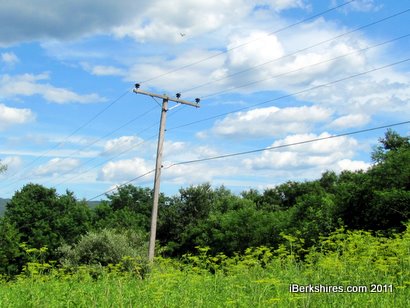 Chris Whatley, a civil engineer, said future wiring into the glen will be underground but burying the current lines cutting through the glen was too expensive. The committee asked him to find out if the electric company would consider moving them to the roadway. |
Edward Whatley, an engineer with Vanasse Hangen Brustlin Inc., said the 400,000-gallon reservoir is required for gravity-fed firefighting capabilities. A pump station will also have to be installed at the bottom of West Road to get water to the glen; piping will follow the roads to reduce impact. However, a tower was not part of the Massachusetts Environmental Policy Act review; Cathy Garnett of the Department of Conservation and Recreation said the MEPA office would have to determine if the tower constituted a change in project and a public hearing.
Whatley said the sewer pipes leading up to the glen were in good shape and there was a high-pressure gas line that would have to be reduced to low pressure for use at the glen.
The engineering work is being done with a $275,000 grant from MassDevelopment with the anticipation of applying to the new MassWorks Infrastructure Program in September for funding for the construction of water and sewer lines.
• Community Development Director Donna Cesan said a draft of a request for expressions of interest will be sent to advisory committee members for review. The target date for publication is August with a conference and site visit for interested developers in September. The application deadline would be November and the RFIs will provide a basis for establishing criteria for the next step, the request for proposals.
"It gives us really good feedback before we go through the formal process," she said. "It's really good for the developers because they don't have to go through as much expense."
Tags: Greylock Glen,

